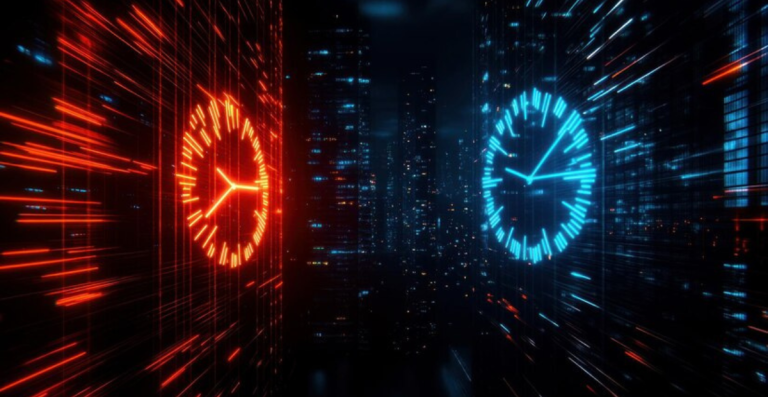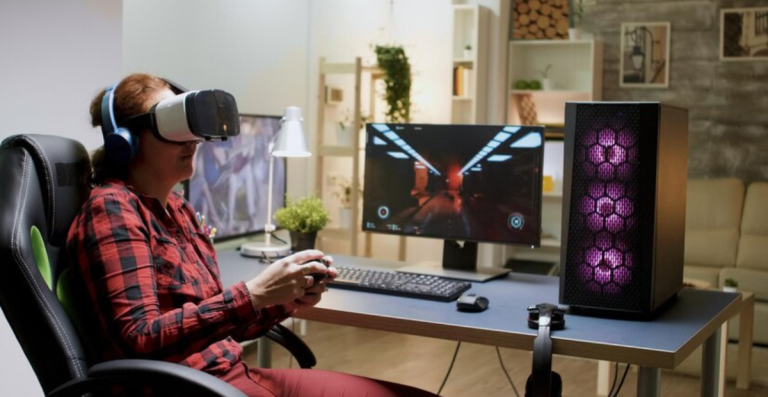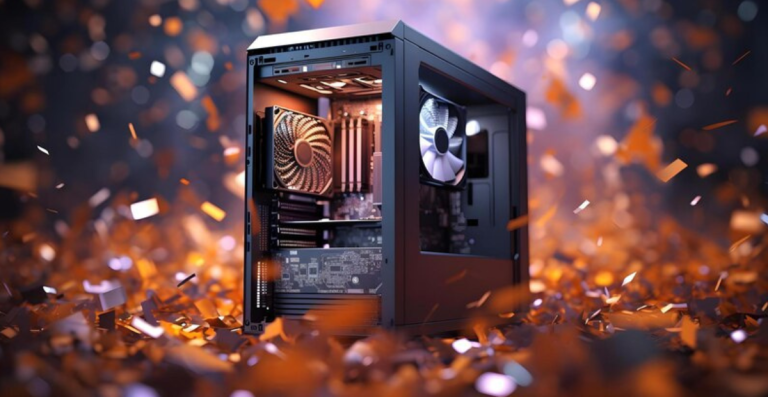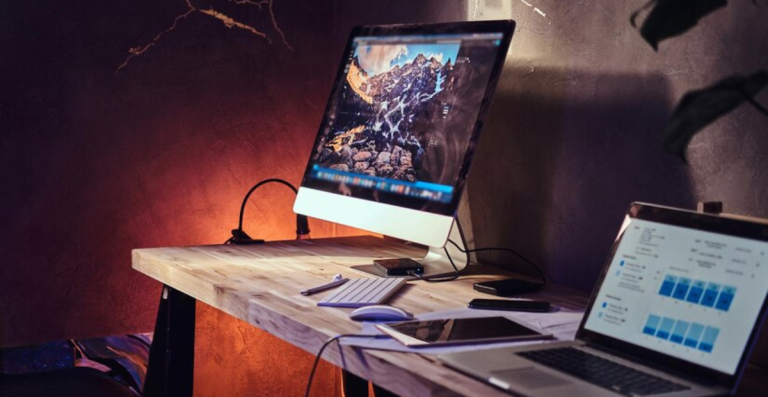Ultimate Guide to PC Gaming Performance Optimization
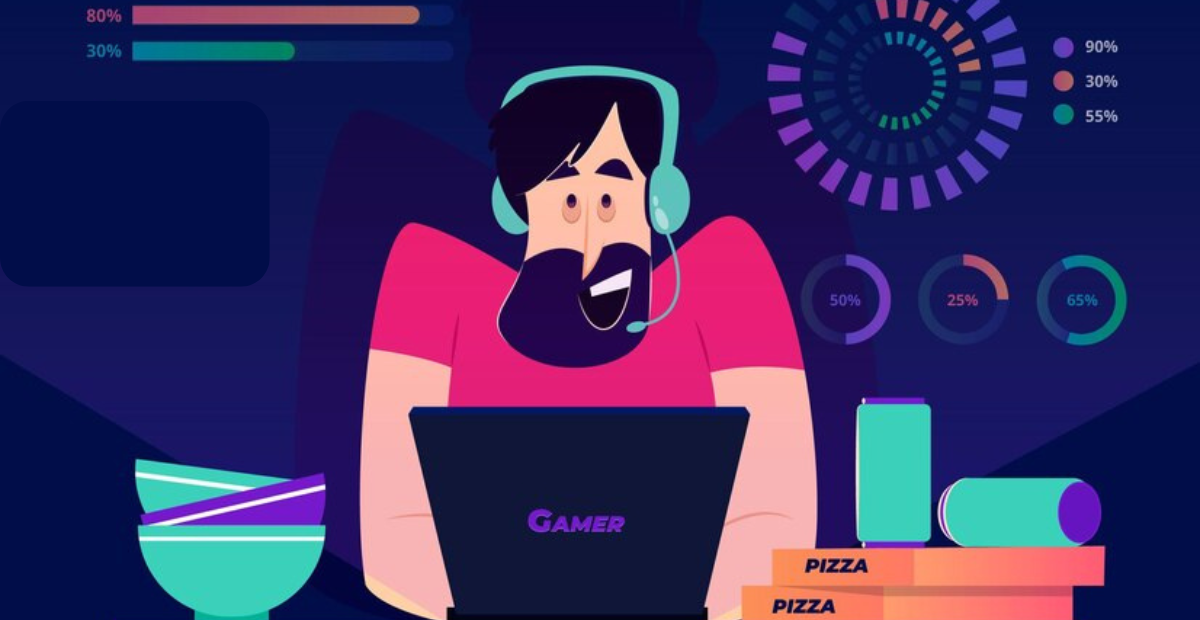
Your entire gaming experience is influenced by the performance of your PC. Smooth gameplay, fast load times, and responsive controls are crucial whether you are exploring vast open worlds or diving into fast-paced shooters. The secret to maximizing your PC’s potential is understanding what is preventing it from working properly and how to resolve it.
You can concentrate your efforts where they will have the biggest impact if you are aware of the typical performance bottlenecks. Optimizing your gaming setup involves smart configurations and targeted enhancements to get the most out of your time and money, not a mindless upgrade of every part or adjustment of every setting.
Why PC Gaming Performance Optimization Matters?
There is more to gaming than just graphics. Frame drops, stuttering, lengthy load times, or input lag are all signs that your computer is having performance issues. In multiplayer games, these problems lessen immersion and may even affect your ability to compete. Smoother gameplay, improved responsiveness, and an all-around more pleasurable experience are the results of performance optimization.
Understanding Key Performance Bottlenecks
Your PC’s gaming performance depends on several factors, but the most common bottlenecks are:
- CPU limitations that slow down game logic and physics calculations.
- GPU constraints affect frame rates and graphical detail.
- Insufficient or slow RAM is causing lag or stuttering.
- Storage speed impacts load times and streaming of game assets.
- Thermal throttling, where heat forces your components to slow down.
- Software inefficiencies, like outdated drivers or unnecessary background processes.
Identifying which of these bottlenecks affects your setup helps you prioritize your upgrades and optimizations.
An Overview of Optimization Techniques
There are two primary methods for maximizing PC gaming performance:
- Upgrades to the hardware include selecting the appropriate CPU, GPU, RAM, and storage options, as well as adequate cooling and a cozy workstation.
- Software tuning includes enhancing your online gaming network, managing background apps, updating drivers, optimizing your operating system, and modifying game graphics settings.
By combining these tactics, your PC will provide the most responsive and fluid gaming experience possible.
Upgrading Hardware for Enhanced Gaming Performance
The best method to improve your gaming performance is frequently to upgrade your hardware. Although software adjustments can reduce lag and squeeze out extra frames, better components are what really make a difference. But upgrading involves more than just purchasing the priciest components; it also entails selecting the best ones for your requirements, financial situation, and existing system.
Knowing the functions of each piece of gaming hardware enables you to make informed choices that optimize your investment.
Upgrading Hardware for PC Optimization
The easiest way to increase gaming performance on your PC is usually to upgrade the hardware. However, it is critical to know which elements have the biggest effects on your gaming experience and how to select the best upgrades given your existing configuration and financial constraints.
The main hardware components and their functions are broken down in this section to assist you in making well-informed decisions that will maximize performance.
CPU and GPU
The central components of your gaming setup are the CPU and GPU. Together, they provide fluid gameplay and excellent visuals.
Recognizing the Effect of CPU on Gaming
The CPU handles general system operations as well as game logic and physics processing. Even if you have a powerful GPU, a weak CPU can bottleneck your system and limit your frame rates.
Finding CPU Bottlenecks
Your CPU may be the bottleneck if it reaches almost 100% while you are gaming but your GPU stays at a low level. This can be diagnosed with the use of monitoring tools such as MSI Afterburner or Task Manager.
Selecting the Best CPU for Gaming
Seek out CPUs with high clock speeds (above 3.5 GHz) and multiple cores (4 to 8). Popular and dependable options for gaming are the AMD Ryzen 5/7 and Intel Core i5/i7 series.
Compatibility and Installation
Make sure the chipset and socket of the CPU you have selected are supported by your motherboard. Additionally, look for BIOS updates to prevent incompatibilities.
The Foundation of Effective Gaming
The CPU-GPU combination must be balanced. Your gaming potential will be limited by a weak CPU, regardless of how powerful your GPU is.
Understanding the Limitations of GPUs
Graphics rendering is done by your GPU. Your GPU may require an upgrade if you are experiencing low frame rates or are unable to maximize settings.
How to Choose a Gaming GPU
Choose a GPU based on the resolution and frame rates you want to achieve. Mid-range GPUs, such as the AMD RX 6600 XT or NVIDIA RTX 3060, are good for 1080p gaming, but higher-end GPUs are needed for 1440p or 4K gaming.
Maintaining Drivers’ Current Knowledge Is Essential for Performance and Stability
Keep your GPU drivers up to date at all times. To enhance gaming stability and performance, manufacturers frequently release bug fixes and optimizations.
Overclocking
By pushing your CPU or GPU’s speeds above their factory settings, you can get additional performance benefits. Even modest overclocks can enhance gaming smoothly, but they need to be used carefully and with adequate cooling.
RAM
RAM is essential to how smoothly your games run, particularly since more recent games require more memory.
RAM’s function in Gaming
RAM temporarily stores information that your system needs to access fast, which affects multitasking and game loading.
Finding Bottlenecks in RAM
Upgrading RAM can be beneficial if you experience stuttering or slowdowns and your RAM usage is close to maximum.
The Ideal amount of RAM for Gaming
For most gamers, 16GB of RAM is the ideal amount. 32GB might be useful for demanding games or heavy multitasking.
RAM Latency and Speed
Performance is enhanced by faster RAM with lower latency, particularly on AMD Ryzen systems. Choose DDR4 or DDR5 RAM that operates at 3000 MHz or faster.
Adding More RAM
To make the most of dual-channel memory and speed, install RAM in matched pairs.
Storage
In-game asset streaming and load times are influenced by storage speed.
Storage’s Effect on Gaming
- Stuttering during gameplay and longer load times can be caused by slow hard drives.
- Benefits of SSDs for Gaming: SSDs significantly increase system responsiveness and load times.
NVMe SSDs
Compared to SATA SSDs, NVMe SSDs have faster speeds, which further enhance streaming and load times.
Organizing Storage Area
For best performance, keep drives under 80% full, and arrange games to regularly free up space.
Cooling
Proper cooling keeps your hardware operating at its best by preventing thermal throttling.
Importance of Adequate Cooling
Excess heat can cause components to slow down to avoid damage.
Types of Cooling
Air cooling with quality fans suits most setups, while liquid cooling offers better temperatures for high-end or overclocked systems.
Improving Case Airflow
Proper fan placement and dust management maintain airflow and cooling efficiency.
Monitoring Temperatures
Use tools like HWMonitor or MSI Afterburner to keep an eye on CPU and GPU temperatures.
A Workspace
Your gaming environment also impacts comfort and performance.
Creating a Comfortable Gaming Environment
Invest in ergonomic furniture and ensure good lighting to avoid fatigue.
Impact on Long Gaming Sessions
A well-set workspace keeps you comfortable and focused for longer, improving your overall gaming experience.
Setting up the Software for Gaming Optimization
You can only go so far with hardware upgrades; to make sure your computer runs smoothly and makes the most of your hardware, optimize your software environment. Practical instructions for optimizing your operating system, managing background tasks, updating drivers, and adjusting game settings are covered in this section.
Operating System Optimization
Maintaining a lean and optimized operating system is crucial for gaming performance.
- Maintaining Windows Updates: The stability and compatibility of games may be impacted by security patches and performance enhancements included in routine Windows updates. Install critical updates at all times.
- Turning on Game Mode: A built-in Game Mode in Windows 10 and 11 gives priority to games when using CPU and GPU resources. Go to Settings > Gaming > Game Mode to activate it.
- Changing the Virtual Memory (Page File): On your storage drive, virtual memory functions as additional RAM. System slowdowns can be avoided by setting a fixed page file size. Although Windows typically handles this well on its own, you can manually adjust it to improve performance.
- Enhancing Startup Initiatives: Many apps use resources when they first launch. Using Task Manager, turn off unused startup apps to conserve CPU and memory.
- Turning Off Windows Features That Are Not Necessary: To increase responsiveness, turn off any unnecessary background services and visual effects, such as animations, notifications, and Cortana.
- Power Settings: Set your PC to High Performance mode in Power Options to avoid power-saving throttling during gaming.
Driver Updates
Up-to-date drivers ensure your hardware runs efficiently and supports the latest game technologies.
- Updating Other Drivers: Beyond your GPU, keep your motherboard chipset, audio, and network drivers current for optimal performance.
- Using Manufacturer Software: NVIDIA GeForce Experience and AMD Radeon Software simplify driver updates and offer game-specific optimizations.
Background Processes
Minimizing distractions and resource hogs helps maintain stable frame rates.
- Identifying Resource-Intensive Processes: Use Task Manager to spot apps consuming high CPU, RAM, or disk.
- Closing Unnecessary Applications: Before gaming, close browsers, streaming apps, and other software that aren’t essential.
- Disabling Notifications: Turn off Windows notifications and background app refresh to prevent interruptions.
Optimizing Game Graphics Options
Tweaking in-game graphics settings balances visual quality and performance to suit your hardware.
- Understanding Key Graphics Settings: Settings like texture quality, shadows, anti-aliasing, and draw distance impact performance differently. Lower settings that cause the biggest frame drops first.
- Balancing Visual Quality and Performance: Aim for stable frame rates (usually 60 FPS or higher) while maintaining visuals you enjoy.
- Using In-Game Performance Metrics: Enable FPS counters and performance stats in games to monitor how changes affect gameplay.
- NVIDIA DLSS and AMD FidelityFX Super Resolution (FSR): These AI-driven upscaling technologies boost frame rates with minimal loss in visual quality, great for squeezing extra performance.
- Ray Tracing: While visually impressive, ray tracing is demanding. Use it if your GPU can handle it without dropping below your target FPS.
- Fullscreen vs. Windowed Mode: Fullscreen mode generally offers better performance and lower input lag compared to windowed or borderless modes.
Optimizing the Network for Online Gaming
A steady and quick network connection is crucial for online gaming performance. If your internet setup causes packet loss or lag, even the best hardware will not help.
Comprehending Latency (Ping)
The time it takes for data to move between your computer and the game server is measured by latency. Smoother gameplay and less delay are the results of lower ping. For optimal performance, aim for a ping of less than 50 ms.
Comparing Wired (Ethernet) and Wireless (Wi-Fi)
Faster, more reliable speeds with reduced latency are provided by Ethernet connections. When gaming, try to connect via a wired connection. Despite its convenience, Wi-Fi can experience signal drops and interference.
Router Configuration Optimization
To give priority to gaming traffic, turn on Quality of Service (QoS) on your router. This lessens lag when several devices connect to your network.
Location of the Router
To optimize Wi-Fi coverage and signal strength, position your router in a central, elevated location away from obstructions.
Terminating Applications That Require a Lot of Bandwidth
Before gaming, pause downloads, streaming, and other high-bandwidth activities on your network to free up resources.
Choosing the Right Game Server
Many games let you select servers. Pick one geographically close to reduce ping and improve connection stability.
Updating Router Firmware
Keep your router’s firmware updated for security patches and performance improvements.
Game Performance Metrics
Monitoring important performance indicators enables you to see where your PC needs to be improved and how it handles games.
FPS (frames per second)
The number of images your computer renders per second is known as FPS. Smoother gameplay is associated with higher FPS. For fluid performance, aim for at least 60 frames per second.
Use of CPU and GPU
Finding bottlenecks is aided by usage monitoring. CPU limits may be indicated by high CPU but low GPU usage; GPU bottlenecks may be suggested by the opposite.
Use of VRAM
Your GPU’s video memory is called VRAM. Stuttering and texture pop-ins can occur when VRAM runs out.
RAM Usage
Monitor your total RAM usage to determine whether you require additional memory or whether background apps are using up system resources.
Ping, or Network Latency
To identify network problems affecting online play, continuously monitor the ping.
Monitoring of Temperature
Monitor CPU and GPU temperatures to avoid throttling and overheating.
Custom Resolutions and Mods
There are more ways to customize your gaming experience than just using the default settings. You can adjust gameplay and graphics with custom resolutions and mods, but it is crucial to use them carefully.
Particular Resolutions
The Benefits of Using Custom Resolutions
The native resolution or aspect ratio of your monitor may not always be fully supported by games. Performance optimization, clarity enhancement, and stretching correction are all possible with custom resolutions.
Configuring Personalized Resolutions
To create and apply custom resolutions, use the control panel on your GPU (also known as the AMD Radeon Settings or NVIDIA Control Panel). To guarantee stability, always test new settings.
Considerations for Aspect Ratios
Distorted images can be avoided by maintaining the proper aspect ratio. Widescreen and ultrawide monitors typically have ratios of 16:9 and 21:9, respectively.
Changes (Modifications)
Mods come in a variety of forms, from straightforward aesthetic adjustments to intricate gameplay redesigns. Improvements in quality of life, new content, and graphics are popular kinds.
Locating and Setting Up Mods
The safest places to download mods are reputable sites like Steam Workshop or Nexus Mods. Always pay close attention to the installation instructions.
Stability and Compatibility
Certain mods may cause crashes or conflict with one another. To fix problems, backup your game files and install mods one at a time.
Final Thoughts
A constant process, optimizing your PC for gaming involves striking a balance between software tweaking, hardware upgrades, and personal preferences. Your gaming experience remains fluid and pleasurable with routine maintenance, such as updating drivers, optimizing your system, and keeping an eye on performance.
Adapt your optimization strategy to your particular hardware configuration and the games you play. You can enjoy responsive, engaging gaming sessions and realize your PC’s full potential with perseverance and attention to detail.

